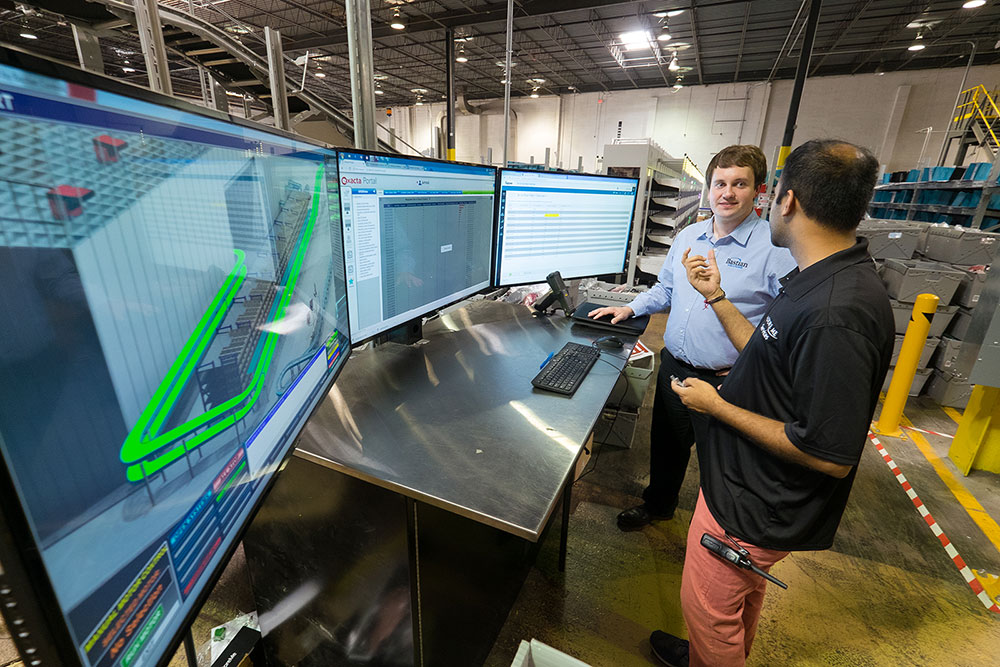
3 Keys to a Successful Warehouse Management System Implementation
William Saucer | 09 February 2018
Purchasing a new warehouse management system (WMS) can bring levels of uncertainty and elicit questions such as: Did I make the right investment? Is this project going to be completed on schedule? Will my employee adapt to the new system? No need to worry. The experts from Bastian Solutions' consulting are here to help you through the process of selecting the right warehouse management system for your warehouse and distribution environment.
After we've helped you find the best WMS system for your needs, it's important to implement it properly. Here are three key points to ensure successful WMS implementation:
1. Reward the Top Warehouse Performers
Within any warehouse, there are operators who showcase operational excellence with every function they do. These individuals should be major components in the early phases of a WMS implementation. These super star individuals can provide the following significant information:
- The operator will have first-hand knowledge of what gaps in functionality are in the current system that should be brought forth with the new software.
- The operator could advise what features are crucial for day-to-day operations versus what features are “like to haves”. This alone could greatly impact software delivery.
- The operator can facilitate early adoption for others, and they are a key stakeholder in what features will be implemented into the WMS software.
By rewarding this group of individuals, you will set a culture of inclusion and importance to the warehouse workers who have “boots on the ground”. This group will have a positive mindset that will resonate throughout the warehouse as it transitions to the new system.
2. Agile Module Demonstrations/Conference Room Pilots
When the latest and greatest video console or cell phone is getting ready to launch to the end-user, nine out of 10 times consumers want to get their hands on the technology even before it’s fully functional. Having something tangible that the end-user or stakeholders can see early on in the implementation cause reap a number of benefits. By demonstrating the standard components of modules, the stakeholders can have intelligent conversations on tying in business objectives and requirements with the workflow of the modules presented. As demonstration notes are the major notes for the upcoming iterations, the end-user will see a closer alignment of business requirements to operational processes on the warehouse floor.
3. Keep the End-User in Mind
Real-world data analysis indicates that software is quickly abandoned if employee interaction with the software is deemed “hard to use”. With the growing number of temporary employees within the warehousing industry to fill seasonal order surges, a WMS needs to be easy to learn. By keeping user interfaces and experience in line with current UI/UX methodologies, the WMS software will be easier to adopt. For example, Windows 10 uses “toast notifications” as non-intrusive, auto-expiring windows that display information to the user. This feature is commonly used in WMS software. As most end-users are familiar with Windows applications, this provides a common ground.
Whether you're looking for a new WMS system or interested in using one for the first time, our consultants can help. Together, they will explore your system goals, existing processes and important KPIs, and everything else necessary to ensure they fully understand your unique integration requirements. Ensure you’re making the right investment with independent experts who will make sure you get the best platform to meet your business requirements - contact us today.
Comments
No comments have been posted to this Blog Post
Leave a Reply
Your email address will not be published.
Comment
Thank you for your comment.